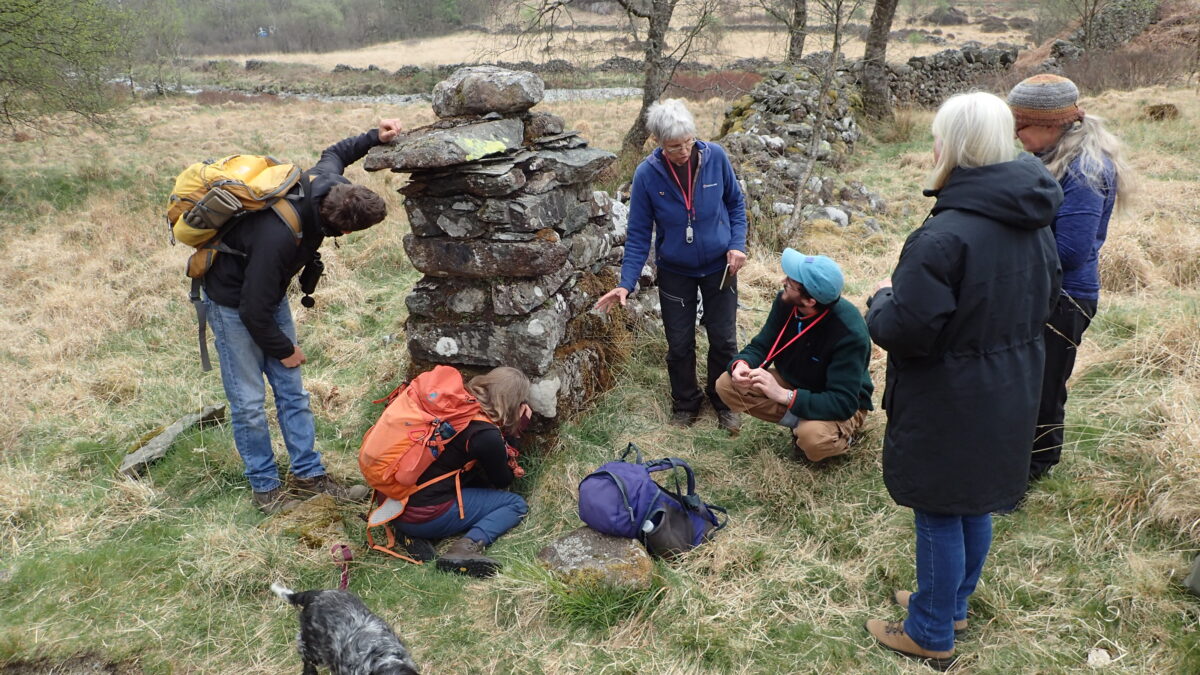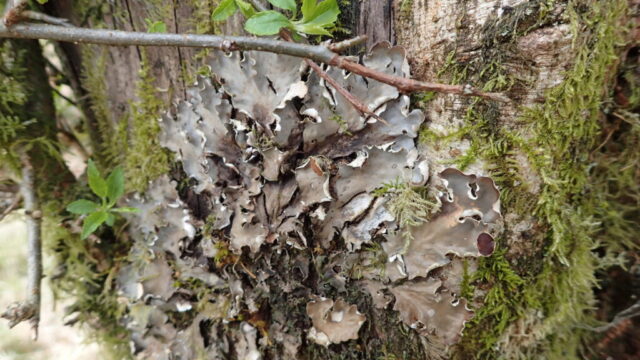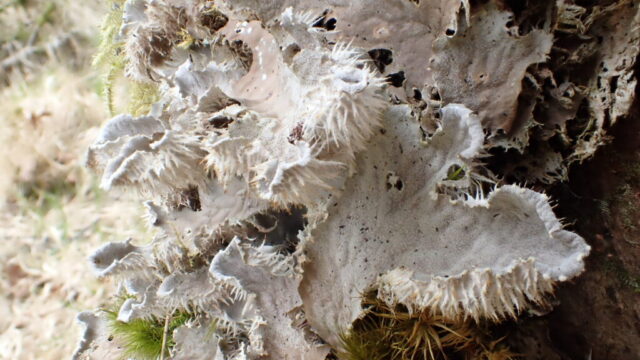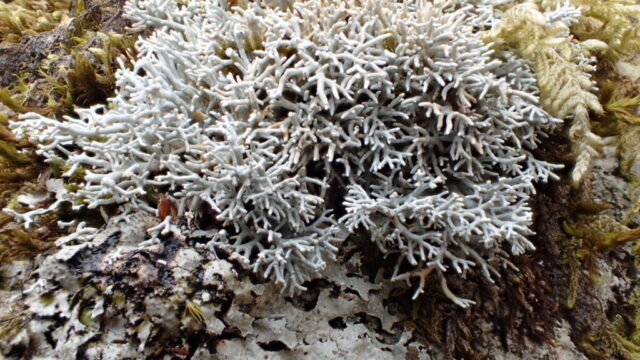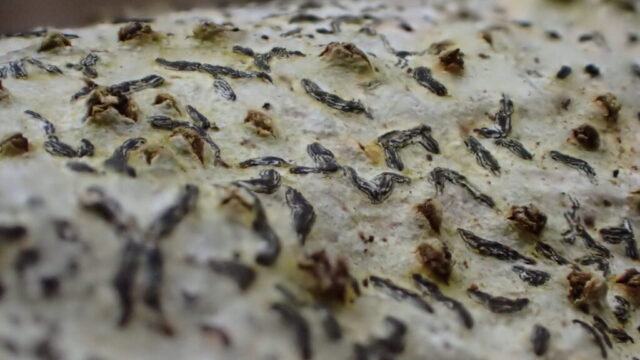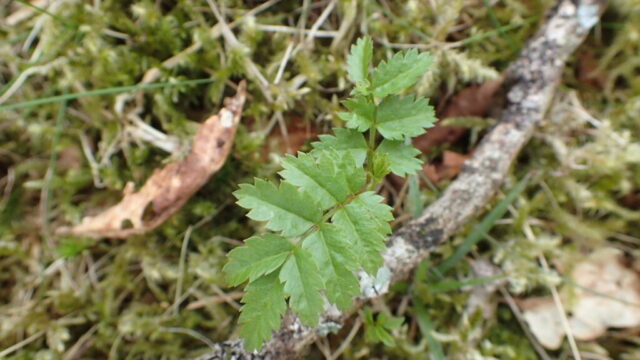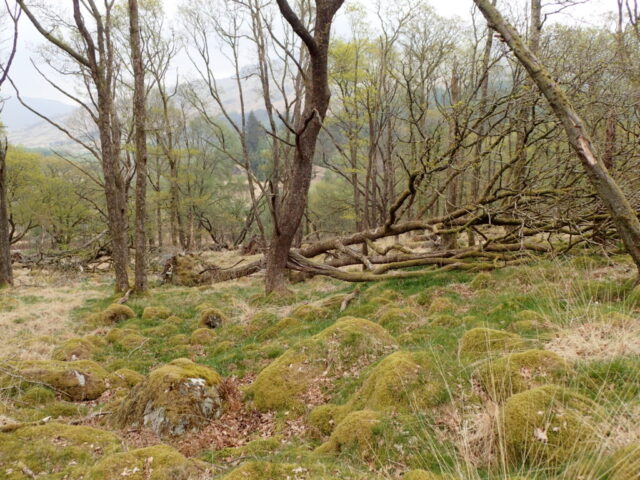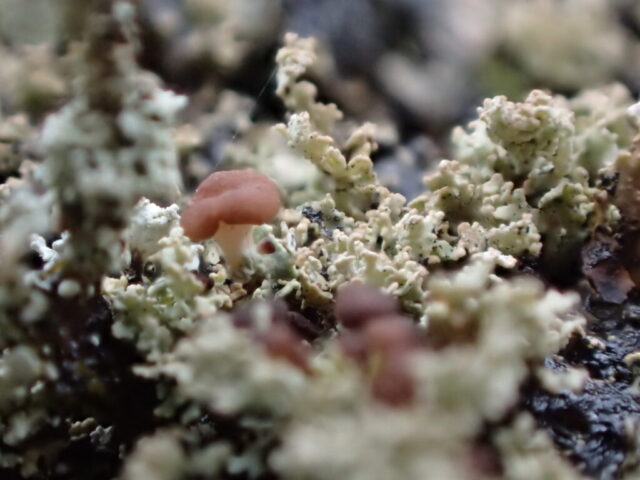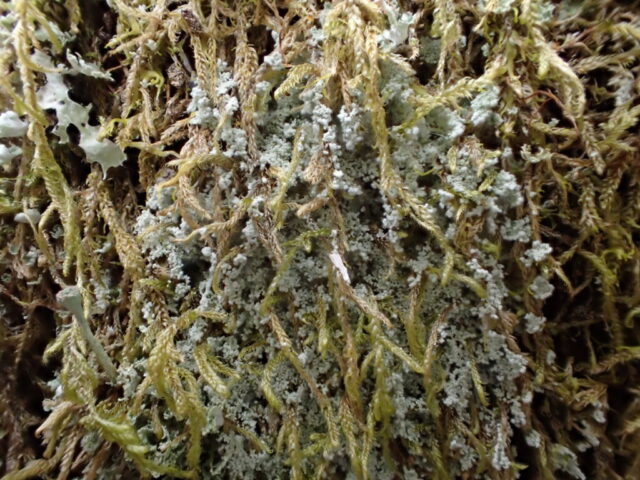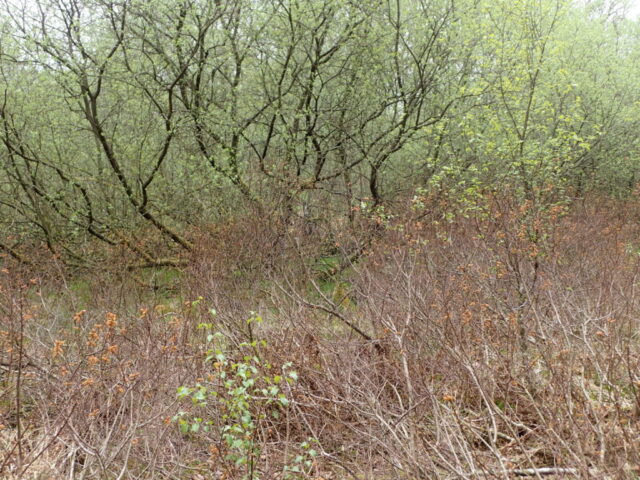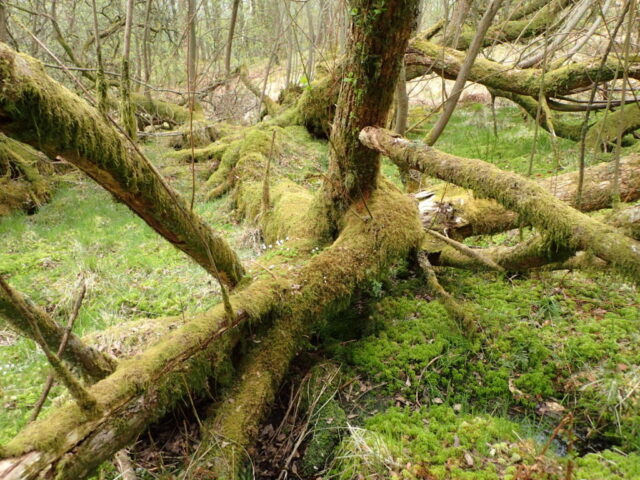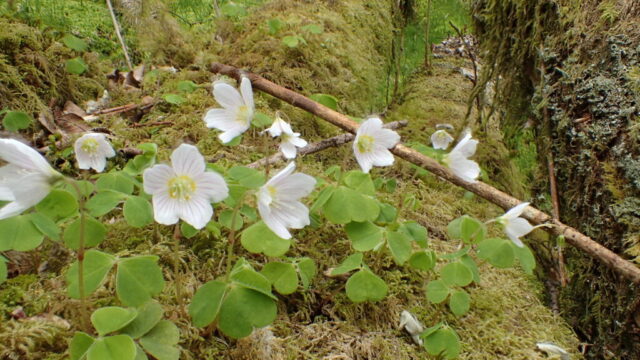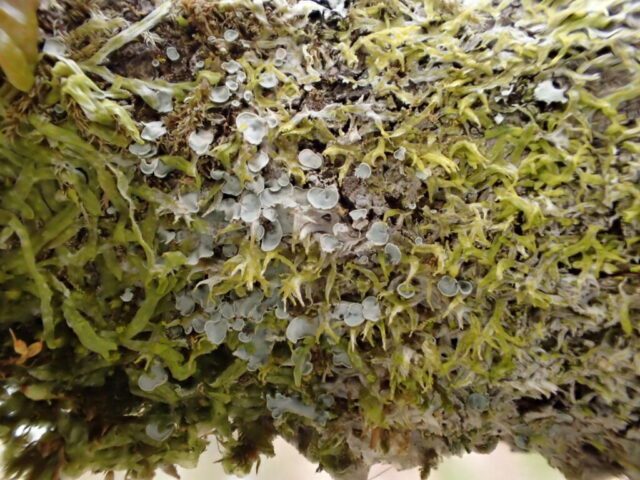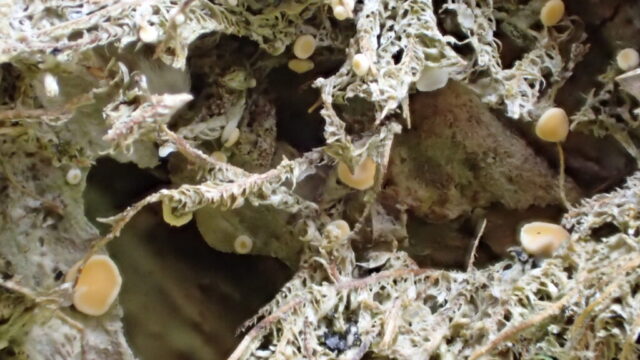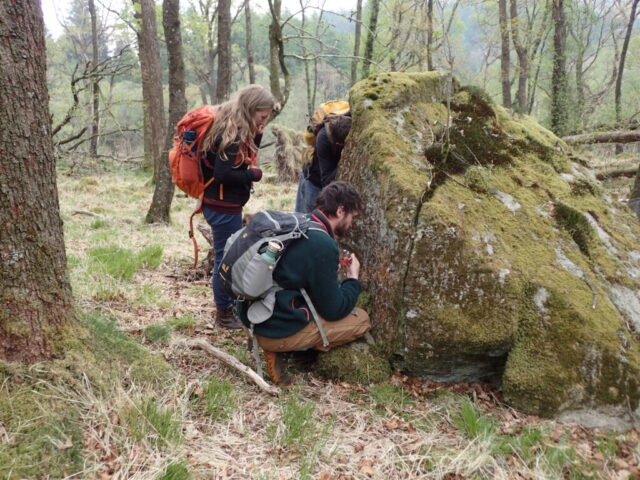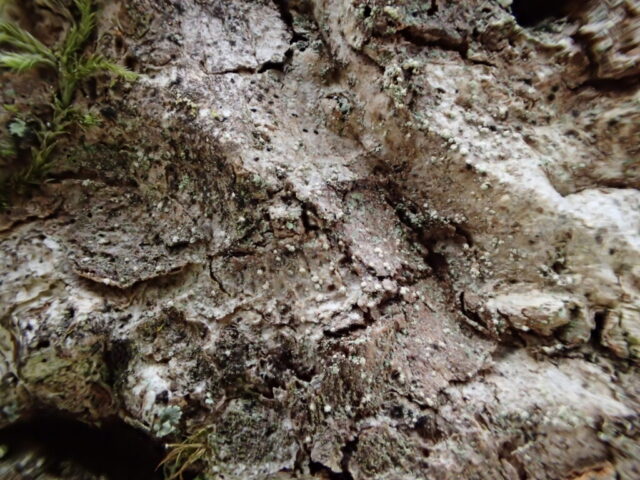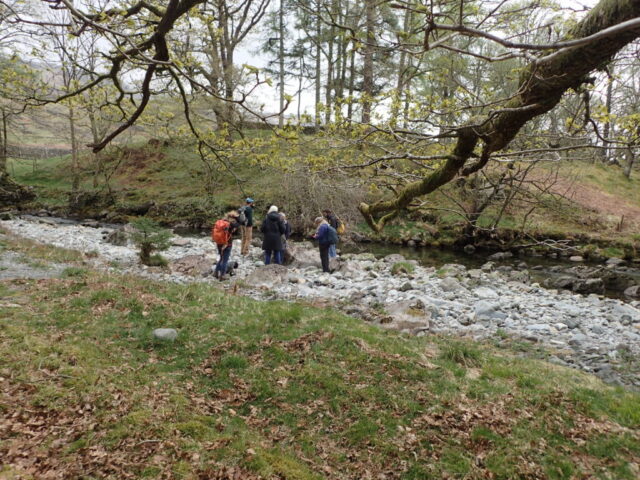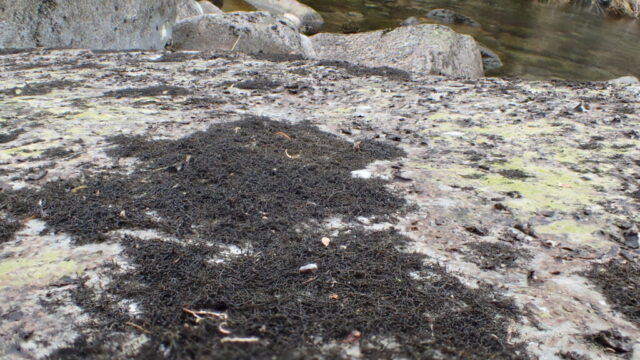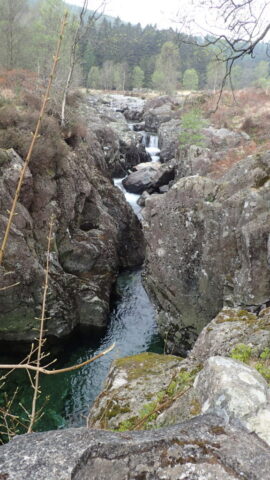Hardknott Forest is near the head of the Duddon Valley, reached by some of us on the winding road over Wrynose Pass. The coniferous forest is slowly being felled and the area is now being restored to broadleaf woodland, peatbogs and heath by the Restoring Hardknott Forest project team who kindly welcomed us.
We visited Great Wood, part of the estate, which has been continuously wooded since the 1600s. However, it must have been replanted at some stage as it seems to mainly consist of even aged oaks in amongst rocks and outcrops, alongside some rowan, sycamore, birch, willow, hazel and bog myrtle. It was pleasing to see a lot of natural regeneration of hazel, rowan, holly and oak as well as a few planted and protected aspen and a scattering of bluebells and wood sorrel. I hope the young trees survive encroaching deer. We pulled up quite a few spruce saplings as we went round.
The River Duddon is the boundary between Westmorland Vice-County 69 and Cumberland VC70. We parked in VC69 but most of our records were in Great Wood in VC70, with records on the bridge judged to be in one or the other.
The dry-stone walls, boulders and outcrops have very attractive mosaics of lichens in crustose, foliose and fruticose forms. Almost straightaway those new to lichens were confronted by the smallness of things and had to digest the information that there were small lichenicolous fungi growing on the already-small lichens. Crustose Lepra corallina showed well what isidia are, but the black dots on the lichen are the “LF” Sclerococcum sphaerale. Pertusaria pseudocorallina showed brown-tipped isidia and the use of chemicals ie a small spot of K turned yellow then blood-red. There were foliose/leafy lichens such as “frilly lettuce” Platismatia glauca which later turned up on the trees. And fruticose Stereocaulon vesuvianum exploded architecturally. Sphaerophorus globsus and fragilis look similar though smaller but do not have the basal squamules and phyllocladia (tiny lobes on the stalk) of Stereocaulon. Red-fruited Cladonia species attracted the eye – these require very careful looking at minute features so best not to attempt a species id when starting out.
There were a few crab apple trees in the wood. One of these had the old woodland indicator Peltigera horizontalis as well as a good example of the more common Peltigera membranacea. Several trees had blown down in Storm Arwen; some were still growing but others were dead and gradually decorticating, which will give an opportunity for lichen species that like bare lignum before eventually being broken down by fungus.
The trees had quite a few common lichen species on their trunks and twigs including in the canopy of the fallen trees. There were some more unusual species found such as Cladonia caespiticia on the bark of fallen oak – and Caz found five Lepraria species during the day! An expansive willow in a damp patch had Coenogonium luteum with lovely orange fruiting bodies on moss on the bark, as featured on the front cover of the Dobson field guide.
The river level was low, though there was enough water for other visitors to swim in the small gorge near the bridge. A few lichens are aquatic and can live under the water; more live by water and can be periodically inundated. In a quick look we found a few lichens by the river such as Ephebe lanata and Placopsis lambii.
The pH of bark and rock is important. Lichenologists can look at geological maps to work out what types of lichen there might be there – and I’m told that some geologists use the lichens to tell them what the rock is. The mortar and concrete on the bridge is based on more basic/alkaline cement, so there were a few limestone species on there such as crustose Rhizocarpon umbilicatum, Placynthium nigrum, Protoblastenia rupestris and jelly lichen Scytinium gelatinosum.
Apart from in the car park, we did not see any lichen species that are indicators of nitrogen enrichment / pollution ie no Xanthoria parietina or Physcia species, so little local agricultural pollution and not much traffic. However, trees and rocks had a coating of algae consistent with more general nitrogen pollution. Historic industry on the west coast and even nitrogen from the north of Ireland may be still having an effect. It was a pleasure to see a great start to the restoration of Hardknott woods.
Text: Chris Cant
Photos: Chris Cant, Caz Walker
